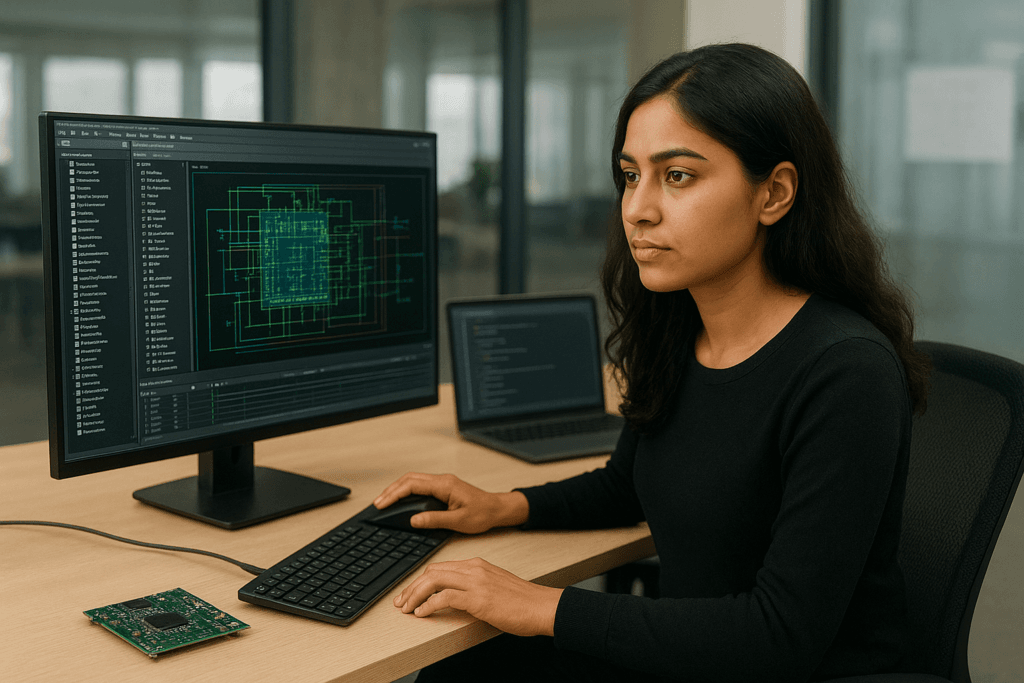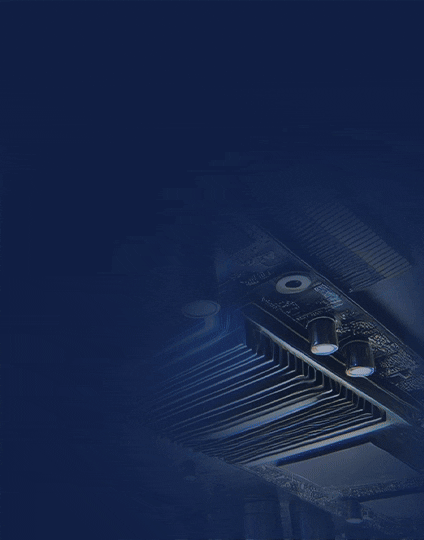FPGA Insights interviewed Lakshmi Prasanna, working with Astra Microwave as a FPGA design Engineer to explore her expertise and gain valuable insights into FPGA design.

What’s your Name, job title & area of research/work?
I’m Lakshmi Prasanna, working as an FPGA Design Engineer at Astra Microwave.
My work mainly involves FPGA design & verification for RF and microwave based communication systems, including RTL development, timing closure and hardware testing.
Can you provide an overview of your experience with FPGA design projects mentioning a few that you’ve worked on, starting with a brief introduction?
I’ve been working in FPGA design for a few years now and most of my projects are aligned with defense and communication systems.
I started with basic RTL development and IP integration and gradually moved into complete end-to-end FPGA development including verification and on-board testing
Can you explain the benefits of using FPGAs over other types of processors?
The biggest benefit of using FPGAs compared to general-purpose processors or DSPs is hardware-level parallelism.
Instead of executing instructions sequentially like a CPU, an FPGA allows you to implement multiple logic blocks that run simultaneously, which drastically improves performance for real-time and high-throughput applications.
What are the most significant trends observed in the FPGA industry over the past year? How will these trends shape the industry’s future?
Over the last year, the FPGA space has become very active.
The market is growing fast especially in 5G, defense, automotive and data center use cases.
There’s a clear shift towards low-power flash / non-volatile FPGAs, mainly because they’re more reliable and easier to reconfigure.
A lot of vendors are now combining FPGA logic with CPU/GPU/AI cores, so everything sits in one hybrid device.
Cloud players like AWS, Azure etc.; are also using FPGAs for real-time, low-latency acceleration.
And finally, AI and 5G continue to be the biggest drivers for FPGA adoption.
In short, the focus is moving towards high-performance but low-power FPGAs, tightly integrated with AI and communication systems.
How do you see FPGA development evolving to meet the demands of modern applications and complex workloads?
It is moving towards more integrated and application-focused solutions. Instead of treating the FPGA as a standalone device, we now combine it with CPUs and AI accelerators in a single platform.
Design flows are becoming more high-level and software-oriented, so we can implement complex workloads faster and with less manual RTL effort.
Overall, the trend is to make FPGAs more flexible, power-efficient and better suited for real-time AI and communication systems.
Key drivers behind the increasing adoption of FPGAs in various applications and industries?
The main reason FPGAs are being adopted more widely is because they offer a rare mix of high performance and flexibility.
Industries like 5G, defense, automotive and edge AI need hardware that can process large amounts of data in real time and adapt to changing standards.
FPGAs fit perfectly in that gap they deliver near ASIC performance but can still be reprogrammed when requirements change, which makes them ideal for modern, fast-evolving applications.
Sectors that stand to benefit the most from FPGA integration, and why?
5G/Telecom, defense & aerospace, automotive (ADAS/EV) and edge-AI systems benefit the most.
These sectors need real-time high-speed processing, but the standards and algorithms keep changing so they also need reconfigurability.
FPGAs give them both ASIC-level performance and flexibility to update the design whenever required.
The role of FPGAs in accelerating AI applications and advancements expected in the near future.
FPGAs play a key role in AI inference, especially when low latency is critical.
Unlike GPUs, which are general-purpose, an FPGA can be tailored exactly to the AI model architecture which makes it faster and more power-efficient for specific workloads.
In the near future, we’ll see hybrid AI platforms where FPGA fabric sits alongside dedicated AI engines and CPUs in a single SoC. This will allow real-time AI at the edge without relying on the cloud.
Ensuring the security and integrity of FPGA designs, especially in sensitive applications like finance and defense.
Security is now a major part of FPGA design, especially in defense and financial systems where tampering can have serious consequences.
To ensure integrity, we use techniques like bitstream encryption, secure boot, configuration authentication, and runtime monitoring.
In simple terms, we make sure that only authorized and verified bitstreams are loaded on the device, and any attempt to modify or probe the design gets detected and blocked.
Advice for students and professionals interested in pursuing a career in FPGA development to stay updated with the latest trends and technologies.
If you’re interested in FPGA development, focus on strong fundamentals first digital design, HDL, timing, and basic DSP concepts.
After that, stay updated by building small projects, exploring Vivado/Quartus tools, and following industry use-cases .
Try to keep an eye on heterogeneous platforms and get comfortable with high-level design flows because that’s where the industry is heading.












